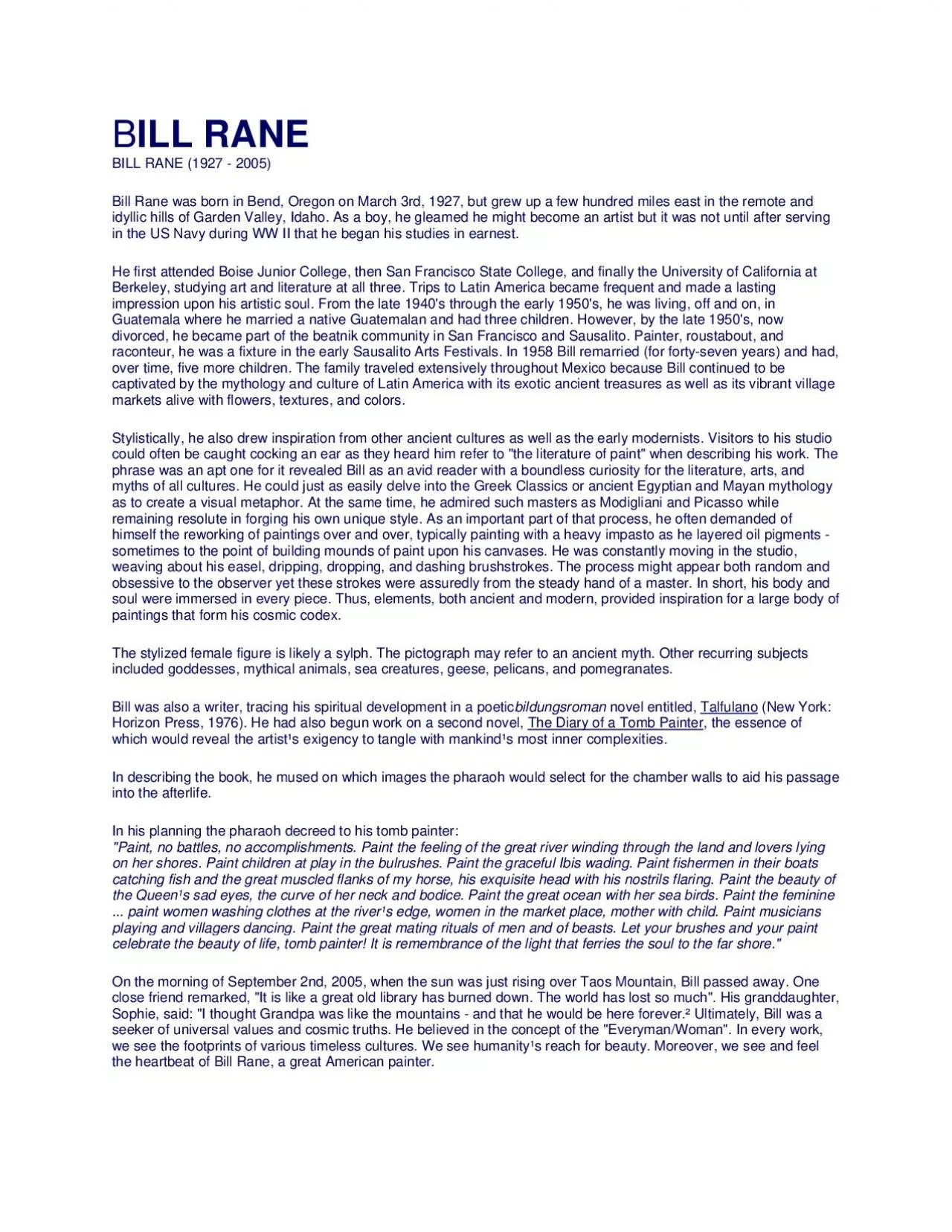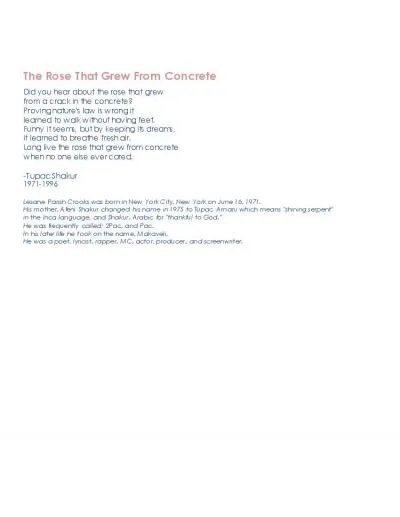PDF-Bill Rane was born in Bend Oregon on March 3rd 1927 but grew up a few
Author : beatrice | Published Date : 2021-08-08
BILL RANE BILL RANE 1927 2005 idyllic hills of Garden Valley Idaho As a boy he gleamed he might become an artist but it was not until after serving in the US Navy
Presentation Embed Code
Download Presentation
Download Presentation The PPT/PDF document "Bill Rane was born in Bend Oregon on Mar..." is the property of its rightful owner. Permission is granted to download and print the materials on this website for personal, non-commercial use only, and to display it on your personal computer provided you do not modify the materials and that you retain all copyright notices contained in the materials. By downloading content from our website, you accept the terms of this agreement.
Bill Rane was born in Bend Oregon on March 3rd 1927 but grew up a few: Transcript
Download Rules Of Document
"Bill Rane was born in Bend Oregon on March 3rd 1927 but grew up a few"The content belongs to its owner. You may download and print it for personal use, without modification, and keep all copyright notices. By downloading, you agree to these terms.
Related Documents












